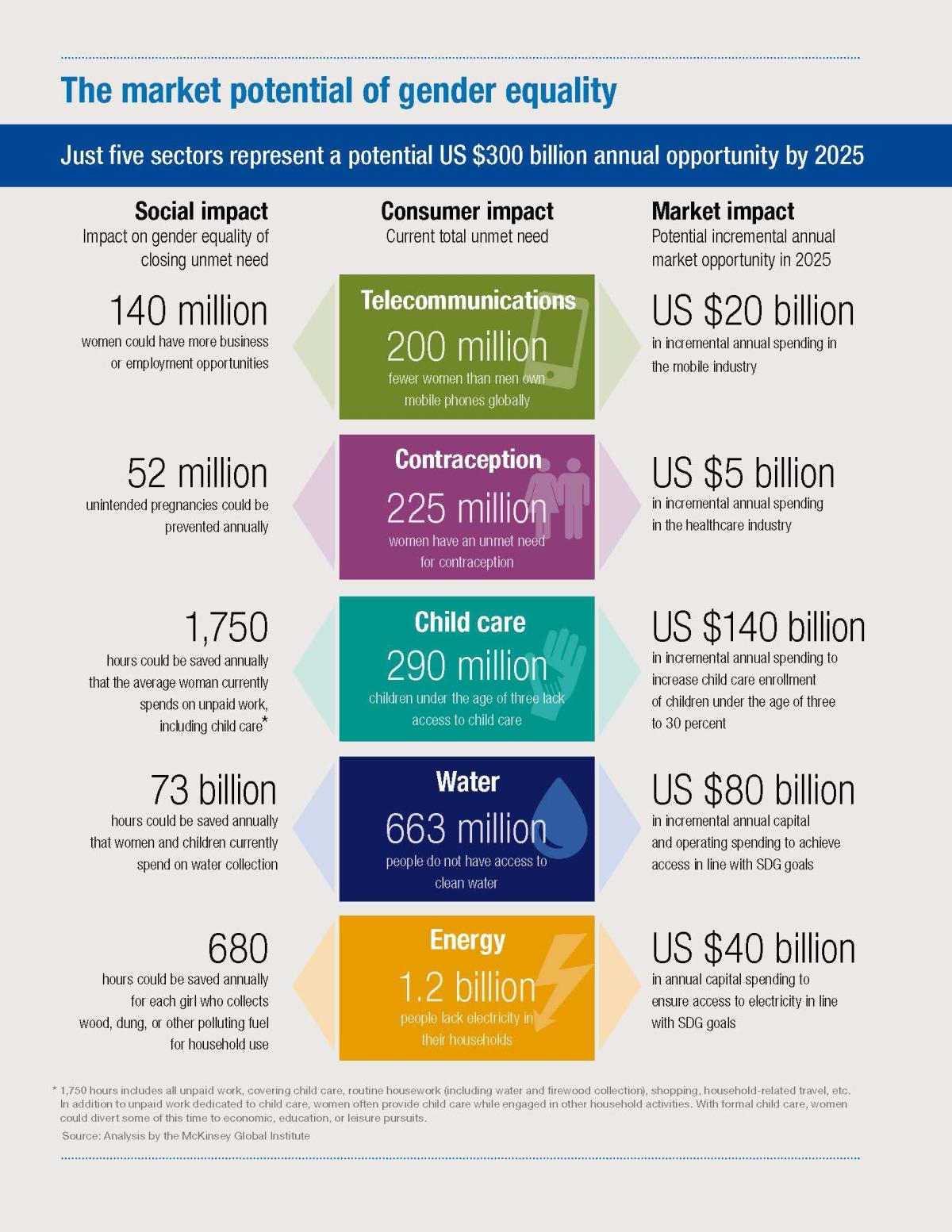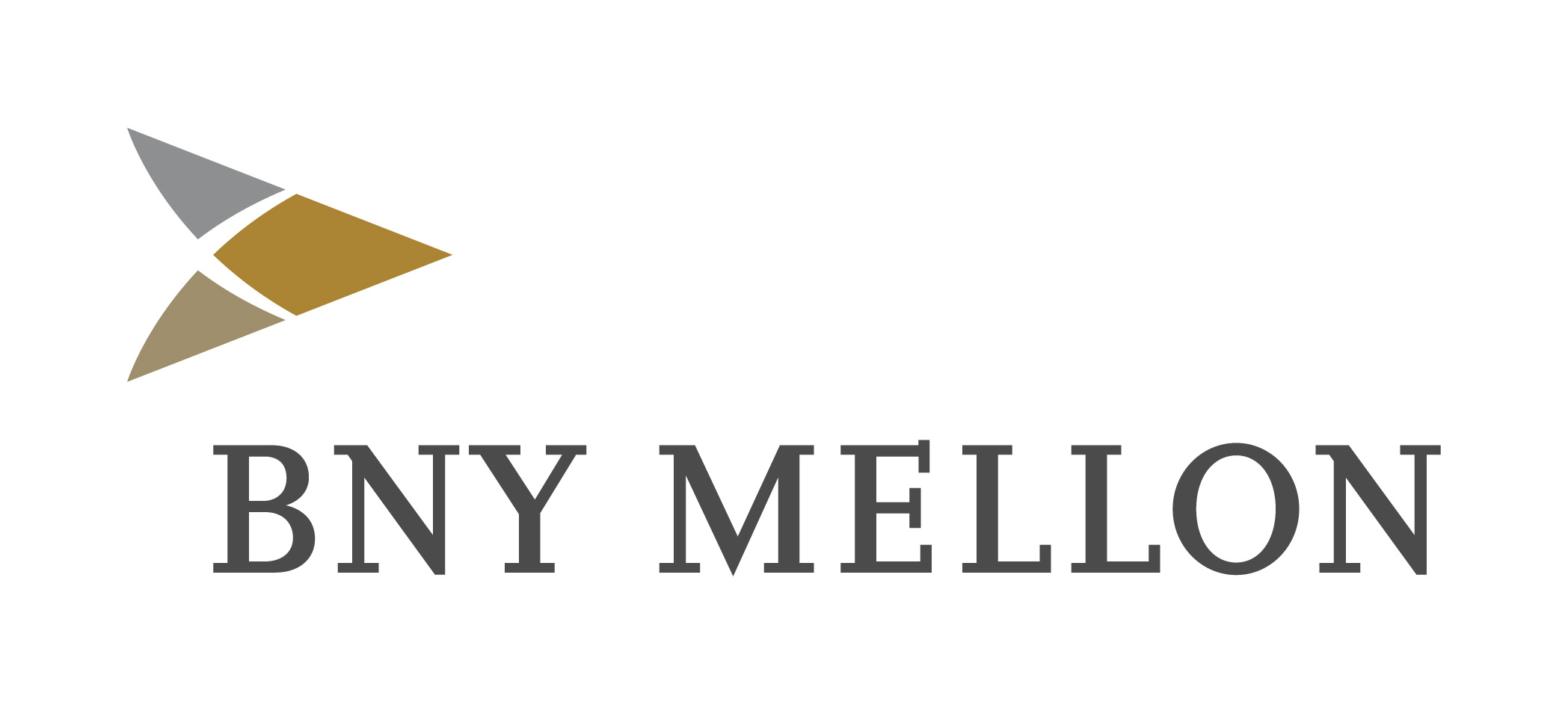Return on Equality: Investment Opportunities that Help Close the Global Gender Gap
By Monique R. Herena, Jyoti Chopra, Heidi DuBois
The potential economic and development gains from gender equality are vast and well-documented — and yet they are currently being bypassed. This joint report by BNY Mellon and the United Nations Foundation explores the market potential of advancing gender equality.
Achieving gender equality is essential as a matter of justice and human rights — and it also unleashes a range of positive economic and development outcomes. While women and girls have made significant gains in the past decade in terms of education, health, economic participation, and political leadership, gender equality has yet to be attained in many critical areas, and at the cost of substantial and unrealized social and market benefits. In fact, the McKinsey Global Institute estimates that narrowing the global gender gap could add US $12 trillion in annual gross domestic product.1
The urgent need to close the gender gap was underscored in September 2015 with the establishment of the 17 Sustainable Development Goals (SDGs), which were adopted by 193 Member States of the United Nations and defined an ambitious global and universal sustainable development agenda. SDG 5 is dedicated exclusively to achieving gender equality and empowering all women and girls.
Bridging the global gender gap will require leadership and investment by the public and private sectors. In particular, institutional and individual investors have both a significant market opportunity to realize and a unique role to play in accelerating the advancement of women and girls. To date, private investment for financial return that simultaneously supports gender equality goals (commonly known as “gender-lens investing”) has typically taken the form of investing in women-led businesses and investing in companies that promote gender diversity in their workplaces. Increased focus is needed on a third, less-common type of gender-lens investing: investing in companies that advance gender equality through their product and service offerings.
The need for such offerings is clear, both in developing and developed markets. Globally, 1.7 billion women still do not own a mobile phone2 and 1.1 billion women are unbanked3 — both major barriers to pursuing and benefiting from economic opportunities. Every day, women around the world spend 200 million hours collecting water to sustain their families due to inadequate infrastructure4 — hours they could otherwise invest in education, gainful work, or leisure. Approximately 225 million women have an unmet need for modern contraception, preventing them from determining the number, spacing, and timing of births that best align with their aspirations for themselves and their families.5 Of course, these are not simply supplyside issues. Women’s access to and usage of products and services is shaped by prevailing social and gender norms, as well as constraints on women’s mobility and control over assets—obstacles that must be addressed to ensure women realize the full benefit of product and service offerings.
Many of these challenges are disproportionately faced by women in low- and middle-income countries, but women in high-income countries are also disadvantaged by product and service offerings that fail to reach them or meet their needs, often due to deeply rooted gender biases in product design, market segmentation, and marketing. For instance, among women who have financial advisers, 67 percent stated in a recent survey that their financial adviser does not understand them or is not interested in their needs or goals.6
In addition to the moral imperative of closing the gender gap, the potential market impact is likewise substantial, creating significant opportunities for investors. In fact, achieving parity across products and services in just five sectors—water, contraception, telecommunications, energy, and child care—could unlock a market of more than US $300 billion in incremental annual spending by 2025.
Investors, asset managers, and companies can seize the opportunity to advance gender equality and drive financial returns by taking these initial steps:
- Institutional Investors — Incorporate a products-and-services approach into existing gender-lens investing and environmental, social, and governance (ESG) investing strategies.
- Individual Investors — Shift investments toward companies that offer products and services that support gender equality, focusing on companies that have committed to quantifiable goals or measures.
- Asset Managers — Create new funds and financial instruments for institutional and individual investors focused on companies offering products and services that support gender equality.
- Companies — Assess the gender equality impact of the company’s business strategy and current operations, such as the gender mix of the customer base. Assess whether and how the company’s products and services can evolve in new ways that promote gender equality, and measure and report progress against targets to help communicate the company’s potential social impact to investors and consumers alike.
By investing in companies offering products and services that promote gender equality, investors can earn the “return on equality,” seizing profitable, under-tapped market opportunities. Given how the use of products and services shapes the health outcomes, livelihoods, and opportunities of billions of women on a daily basis, this investment approach has the potential to help advance gender equality at scale.
1. Estimate reflects 15 indicators of gender equality across 95 countries that were used to assess how far the world needs to advance on a range of dimensions that are key to achieving the economic potential of women. Estimate assumes all countries would match the momentum of the fastest-improving country in their region. Jonathan Woetzel et al., The Power of Parity: How Advancing Women’s Equality Can Add $12 Trillion to Global Growth, McKinsey Global Institute, September 2015.
2. Bridging the Gender Gap: Mobile Access and usage in Low- and Middle-Income Countries, GSMA, 2015.
3. Asli Demirguc-Kunt et al., The Global Findex Database 2014: Measuring Financial Inclusion around the World, Policy Research Working Paper 7255, World Bank Group, April 2015.
4. Water for Women, United Nations, 2015, http://www.unwater. org/fileadmin/user_upload/worldwaterday2015/docs/Water%20 For%20Women.pdf.
5. Modern contraceptive methods include hormonal implants, intrauterine devices (IUDs), female and male sterilization, hormonal pills and injectables, male and female condoms, other supply methods, and modern methods of periodic abstinence (the standard days method and two-day method). Adding It Up: The Costs and Benefits of Investing in Sexual and Reproductive Health, Guttmacher, 2014.
6. Survey of men and women who have at least US $100,000 in income.
BNY Mellon is the corporate brand of The Bank of New York Mellon Corporation and may be used as a generic term to reference the corporation as a whole and/or its various subsidiaries generally. This material and any products and services may be issued or provided under various brand names in various countries by duly authorized and regulated subsidiaries, affiliates, and joint ventures of BNY Mellon. Not all products and services are offered in all countries.
This material may not be comprehensive or up to date and there is no undertaking as to the accuracy, timeliness, completeness or fitness for a particular purpose of information given. BNY Mellon will not be responsible for updating any information herein, which is subject to change without notice. The views expressed herein are those of the contributors and not necessarily those of BNY Mellon. BNY Mellon assumes no direct or consequential liability for any errors in or reliance upon this material.



